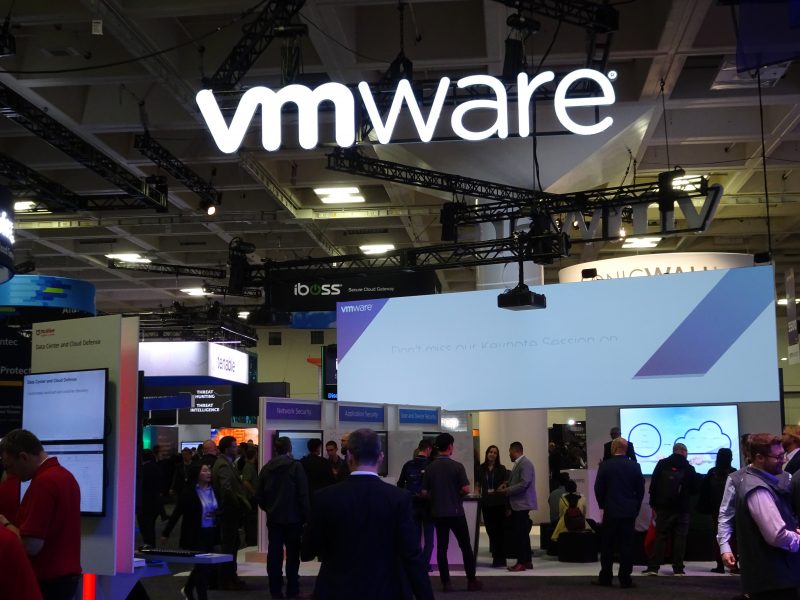 INFRA
INFRA
 INFRA
INFRA
 INFRA
INFRA
VMware Inc. today pushed out a major update to its vSphere and vSAN virtualization tools.
The computing virtualization giant announced a raft of new features that it says will simplify the management of cloud and on-premises environments. Today’s updates also help improve application performance while giving enterprises the chance to move to a single platform for both virtual machines and containers, which host the components of modern apps.
VMware’s vSphere is a virtualization platform that’s used by enterprises to eke out better performance from their hardware. It works by allowing software applications to be deployed via multiple VMs on a single server. VMware vSAN, meanwhile, is the company’s virtualized storage product that’s used to manage storage resources for virtual machines.
Much of VMware’s focus over the past few years has been on enabling virtualization of new container workloads. Containers are popular because they enable developers to build applications that can run on any computing platform without changes, as opposed to legacy apps that need to be rewritten each time.
The vSphere 7 Update 3 and vSAN 7 Update 3 releases expand on that work, helping to create what VMware terms “developer-ready infrastructure” for enterprises. For instance, the new release enables simplified setup of vSphere on VMware Tanzu, a suite of products that helps users to run and manage multiple Kubernetes deployments across public and private clouds. Kubernetes is open-source software that’s used to manage large clusters of containers.
VMware has also added vSphere VM Service support for virtual graphics processing units. Developers can use the VM Service via the Kubernetes API to provision VMs that take advantage of underlying GPU hardware resources, the company said. Meanwhile, vSAN gains something called Stretched Clusters for Kubernetes Workloads, which allows users to extend a vSAN cluster from a single site to two sites, enabling higher availability for the applications it supports.
On the scalability side, vSphere is getting greater resilience and monitoring capabilities for persistent memory systems, including snapshot support for those that use Intel Corp.’s Optane memory in app-direct mode. Moreover, the addition of support for NVMe/TCP in vSphere makes it easier for customers to squeeze more performance out of their existing storage resources.
Another major focus of today’s updates is on simplifying user operations. To that end, VMware has enabled easier setup of NSX Security from within the vSphere client and added an “easy button” workflow to vSAN that makes it simple to shut down an entire cluster in an orderly manner while safely evacuating its data.
The new vSAN Health Check Correlation feature further simplifies things, providing the ability to troubleshoot clusters by highlighting the root cause of health alerts. What that means is that users can address all of the underlying health checks and try to avoid the need for a support request.
Finally, vSAN is getting a bunch of security-related enhancements starting with Stretched Cluster Site/Witness Failure Resiliency capabilities that ensure workloads can stay available amid multiple planned or unplanned outages. Access-Based Enumeration for File Services, meanwhile, restricts the ability of users to view only the files they have been authorized to see, while the addition of Key Persistence Support makes it possible for security keys to be stored in dedicated security hardware.
Holger Mueller, an analyst with Constellation Research Inc., told SiliconANGLE these will be welcome updates because enterprises are always on the lookout for more powerful platforms to power their next-generation applications.
“VMware is helping out with a rich new release of vSphere, bringing together a lot of enterprises’ existing and new VMware investments across software-defined networking, storage, Kubernetes and, of course, Tanzu,” Mueller said. “More integration is definitely what customers want, and these releases promise to enable greater velocity in both DevOps and ITOps.”
VMware said vSphere 7 Update 3 and vSAN 7 Update 3 will be made available to all users before the end of October.
Support our mission to keep content open and free by engaging with theCUBE community. Join theCUBE’s Alumni Trust Network, where technology leaders connect, share intelligence and create opportunities.
Founded by tech visionaries John Furrier and Dave Vellante, SiliconANGLE Media has built a dynamic ecosystem of industry-leading digital media brands that reach 15+ million elite tech professionals. Our new proprietary theCUBE AI Video Cloud is breaking ground in audience interaction, leveraging theCUBEai.com neural network to help technology companies make data-driven decisions and stay at the forefront of industry conversations.